Coming up with creative content ideas on a regular basis is not an easy task, but it’s essential for traffic growth and Google rankings.
A frequently updated website, rising traffic, longer session durations and higher click-through rates (CTR) are some of the ways Google decides that your website is a great resource for your audience.
This is why social media content matters. It has the power to attract your audience to your site and keep them there.
However, churning out new content takes time and you may find that your business is faced with either a total lack of new content ideas or, worse – sub-par articles.
Luckily, there are quick and effective solutions to this problem.
Keep reading to learn about the most effective tips, tools and tactics to help you generate content ideas for all the channels in your content strategy, from podcasts and videos to blogs, infographics and social media posts.
Work with our SEO experts. Request a quote
Look For Ideas Within Your Business
Small businesses with blog posts get 126% more lead growth than those without blog posts.
To successfully manage a blog on your business website and consistently fill it with topics that are relevant, useful and inspiring for your audience, you don’t have to look far and wide.
You can engage your team and start from within your company.
Here are some tried and tested tactics that will help you find new content ideas, rank higher in SERPs and attract more readers to your blog.
1. Organize Brainstorming Sessions
Coming up with as many ideas as possible is the essential part of a productive brainstorming session.
Before you start, take a look at what Moz lists as some of the vital ingredients of a successful content idea curation:
- Break up bigger groups into smaller teams: a shared goal should be contemplated by two or three people at most
- Include people with no preconceived notion of what’s about to be discussed, or people from different teams, so that they offer a fresh angle
- Define a few main parameters of your work that you can discuss to create idea foundations
- “Yes, and” instead of “no, but” approach: recognize the good points of each idea and work on their potential to be incorporated
- Focus on AIDA: ideas that arouse attention, interest, desire and action
- Remember to write down everything so that nuances and finer points of ideas discussed in the early stages are not lost
Speak with our experts. Set Up A Consultation
2. Provide Value To Your Audience
The ultimate goal of every piece of content you publish should be to provide real value to your target audience.
To make that happen, follow these steps:
- Research your audience and create an archetype and a persona
- Make sure you understand your audience’s needs
- Represent the solutions to those needs in your content ideas
By tackling the right issues and adding value for readers, you can make sure that every piece of content you create is:
- Relevant for your audience
- Informative and educational
- Well-researched and useful
- Personal and customizable
- Targeted at a specific segment of your audience, not everyone
- Better than other posts on a similar topic
Having a documented content strategy, a defined workflow and a clear action plan can help you stay on the right track and come up with the right ideas for your future articles.
Besides that, try to:
- Allow ideas to flow freely: write them down and refine them once you’re done; Leave them to sit overnight and come back to them with a fresh pair of eyes and a regenerated mind
- Stay organized and plan everything in advance
- Think of the content format: whether it’s a round-up article, a how-to guide, a checklist, tips and tricks, a case study or in-depth research, plan what the content should look like
- Create a post-publishing plan for sharing content on social media and other spaces and platforms
3. Optimize Existing Content
As content comes in numerous forms, all of it can be reshaped into something else. E-mail campaigns can be turned into articles or marketing videos, the most engaging articles can be made into eBooks or presentations and so on.
The options for repurposing content are limitless and there are usually two ways to go about it:
- Optimize existing articles to update and refresh them: you can either choose ones that are consistently well-ranked on Google to keep them engaging or you can find the articles that rank on pages 2-6 of Google search results, refine them and increase their chances of ranking higher
- Republish old content in a new format: find the most suitable formats for your target audience and repurpose existing content
Analyze your content with tools like Google Analytics to determine how your audience interacts with your site and what they like about it – especially which content pages are performing particularly well. This will help you determine what content to repurpose.
Along with finding the right content, using the best font is essential for better UI. So if you are looking to add stylish, vintage fonts to your websites choose tattoo fonts.
4. Tell Your Personal Story
Consider writing articles about your personal story. In fact, it’s highly recommended to do so. A post describing and explaining some personal struggles and triumphs can be a welcome addition to your blog.
To find potential topics, reflect on your experiences, mistakes, doubts, realizations and successes. This will provide a humane dimension to your business – a story of trials and errors.
This can help you build trust and grow your credibility. It can also show your authentic, vulnerable side and encourage customers or clients to connect with you on a more profound level.
5. Write About Your Business Struggles
Aside from your personal story, you can outline some of the issues and problems your business might be facing or faced in the past.
Publishing an article on the struggles you are facing may be of great help to fellow business owners who are in the same spot as you. Plus, it’s a good topic to expand on: you can reminisce why you started your business, what has changed since, how are you looking to extend your business and so on.
Creating new content for your site, solving your problems and helping others. A triple win!
Whatever you choose to blog about, make sure it’s unique, valuable, engaging and insightful.
Check out the video below where our Digital Silk Head of Content explains how blogging benefits your SEO.
Find Article Ideas Using Forums & Sourcing Platforms
A well-researched, unique content idea and a blog post can increase your traffic 3.5 times!
Thanks to the abundance of valuable information and an entire universe’s worth of content online, you don’t have to feel obliged to reinvent the wheel when creating your own content.
There are online platforms and tools that can source and generate content strategies, topic titles, body text and everything else – if you know where to look.
You only need to conduct thorough research and apply the skyscraper method when creating your own article – because you do want to outdo your competitors, right?
Here is a list of some of the most successful and abundant content idea generators.
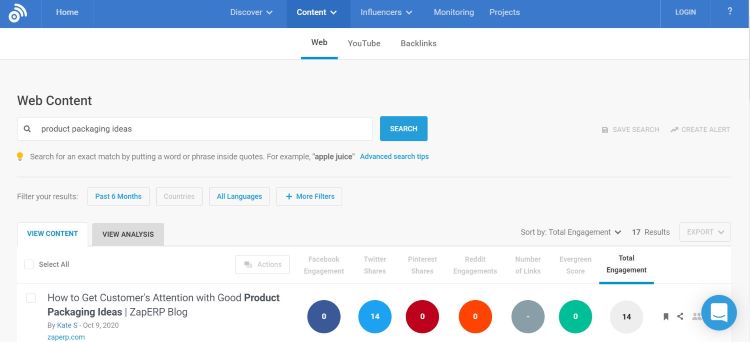
1. Find The Most Shared Content Using BuzzSumo
BuzzSumo is a great resource for generating content ideas that allow you to find the most shared content by keywords.
Simply type in particular terms and BuzzSumo will present you with the most trending and popular topics that are generating clicks and shares. Possibly the best thing about this research tool is that it can break down its findings according to social networks.
This feature allows you to identify which types of content are performing best and going viral on different social networks, including Facebook, Twitter, LinkedIn and others.

2. Look For Hot Topics On Reddit
A content creators’ goldmine, Reddit is one of the busiest online communities with virtually any topic covered in depth. Discussions can be browsed simply by typing in your keyword in the search field and then watching as content ideas unfold.
Loads of topics within subreddits and threads will get listed once you do that, but pay special attention to so-called hot topic pages for sourcing fresh insights.
These are almost always the top topics that are piquing everyone’s interest at the moment and would be compelling to cover for your readers – as long as you find one that’s relevant for your audience.
A good approach to narrow your search down is to add a query of “how-to” or “why” to it so that you pinpoint the topics where your target audience seeks to solve issues.
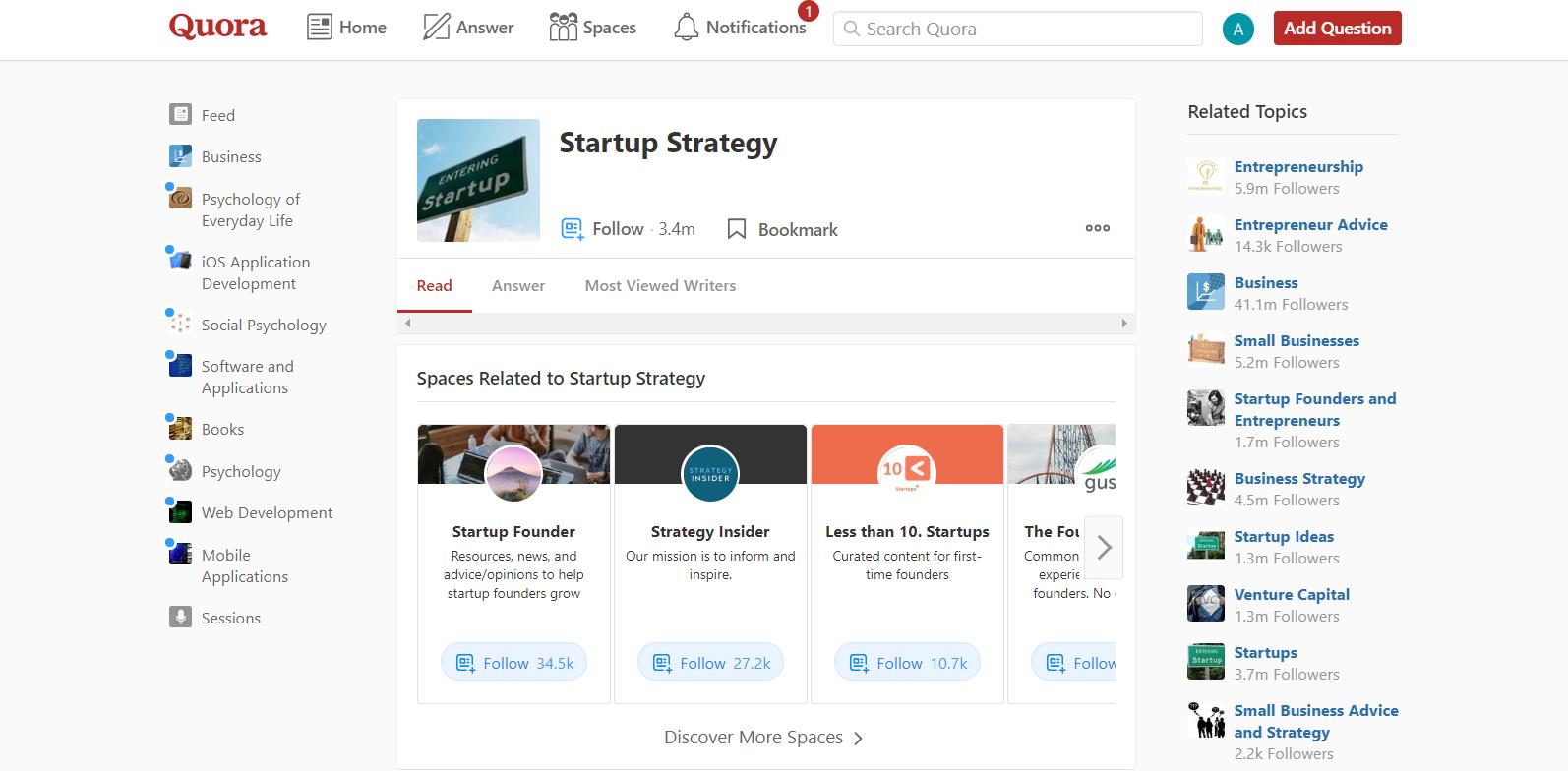
3. Find Out What People Want To Know On Quora
Quora is a fantastic source for finding hot topics for one reason: it’s a platform for people asking questions.
As people from all walks of life ask questions aimed at solving their problems, content creators and content marketers can take insight found there for creating well-researched, full-fledged articles and blog posts.
Aside from looking for direct questions through keywords, you can look for compelling content strategies to cover on your site, video channel or podcast by sifting through the Related Topics and Spaces sections.

Generate New SEO Content Ideas With Keyword Research Tools
Search Engine Optimization tools can be put to use for things other than looking for keywords and stats to optimize content for Google. All it takes is a little bit of thinking outside the box.
SEO tools are actually a portal into trendy topics and content that is creating a buzz. They will provide you with real-time analytics and stats into how popular a certain long-tail keyword or even a question is.
Equipped with this knowledge, you are provided with insight to make most of the hot topics in the online community.
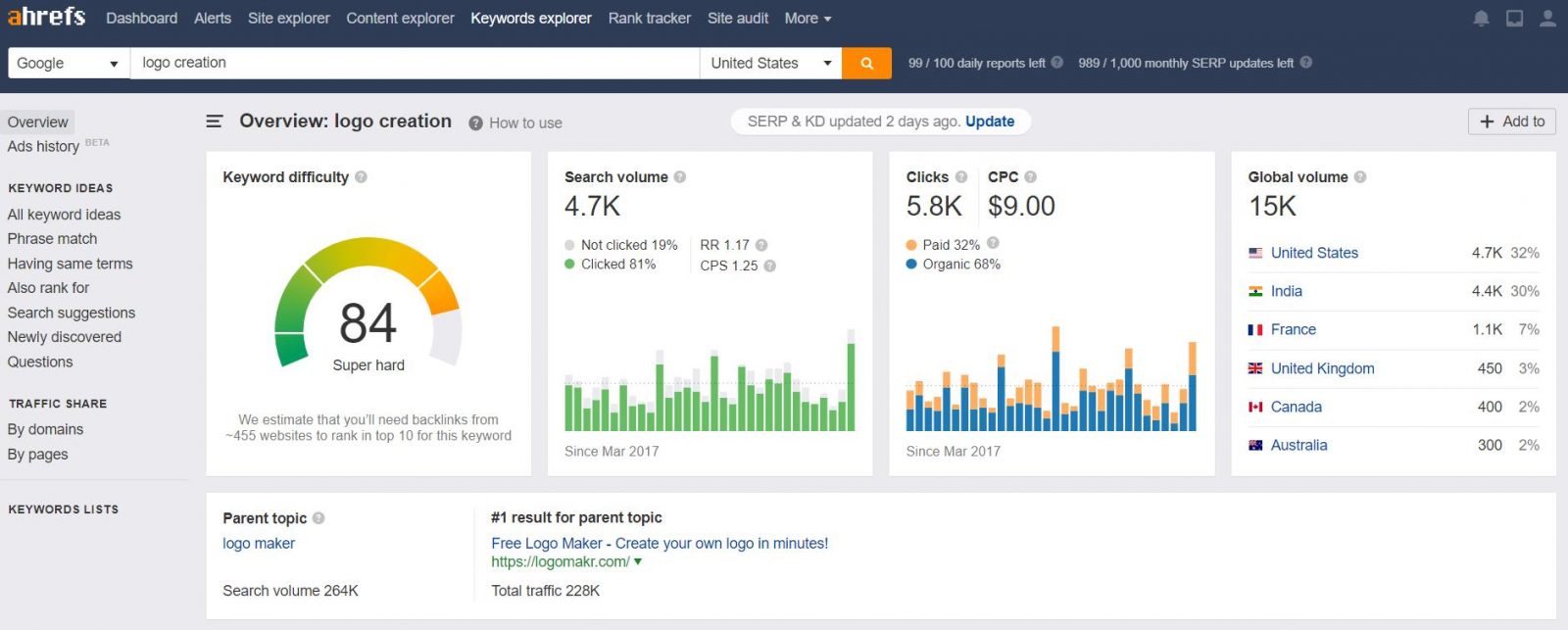
1. Find Keyword Ideas With Ahrefs
Every SEO content creator’s essential tool of trade, Ahrefs is a treasure trove of keywords, phrases, search suggestions and questions generated by users online, as they look for them in search engines.
Each keyword is measured with a use volume and keyword difficulty (signifying how competitive it is) and other valuable data such as Clicks and CTRs.
You can look under All Keyword Ideas for more related (LSI) key phrases or check out what questions and queries are people asking that contain your selected keyword or topic. It is quite clear why this represents a potentially bountiful resource of great content strategies that can help you rank higher in Google SERPs.

2. Find More Keyword Phrases With SEMrush
Similar to Ahrefs, SEMrush is a fantastic tool for organic keyword research.
Through its functions and features that allow the user to visualize topics and key phrases, content ideation on SEMrush can be arranged according to:
- Keyword difficulty
- Traffic
- SERPs
- Semantic relations

3. Find Out What Your Competition Uses With LSI Graph
A potent tool, LSI Graph will list the articles and resources that are doing particularly well on the internet for the given topic – in real-time!
Simply enter your keyword to generate LSI keywords. LSI stands for Latent Semantic Indexing and LSI keywords are words and phrases semantically related to the given topic.
On the right-hand side of the results page, you will notice the Top Performing Content segment showcasing the articles on a subject of your keyword that are getting the most traffic, shares and leads.
Center your content idea around these and try to make your finished article (or video or podcast) even better through a skyscraping technique.

4. Find The Questions Your Audience Asks With Answer The Public
Answer The Public is a quite useful tool for keyword research and brainstorming content ideas for your SEO-friendly articles. You can use it to sketch out an editorial plan for the next week, month, quarter and even year.
When you type in your keyword, you will get a full report with a ton of related questions, comparisons and phrases within an appealing data visualization cloud, along with a list of the search queries in alphabetical order.
Not only will this tool show you what people are searching for on Google, but it also finds the questions people ask on various forums, social media networks and more. You can think of it as your one-stop shop for finding fresh, new ideas.
Use Google For Content Inspiration
It may seem like a no-brainer, but it’s strange how easy it is to overlook Google as a source of wildly useful and lucrative content ideas.
As the world’s largest search engine evolves, so do its accompanying segments. According to SEO Tribunal, 15% of all searches at any given moment have never been searched before on Google.
That means there is a vast quantity of newly searched terms for which there may not be enough (good) content out there.
A chance for you to step in – don’t you think?

1. Google Search Suggestions Can Give You Keyword Ideas
Enter the root of your keyword in Google’s search bar and watch it generate several variations and topic ideas.
You can also use Google search suggestions to identify the types of pages and content that perform the best for your keyword ideas.
Perform a Google search using your keyword idea and visit the top-performing pages.
Are they blog posts? Lists, perhaps? eCommerce pages? Is Google showing video results, too?
If you are quite set on your keyword idea, let the top-performing content inspire your content type as it is proven to rank well.
Pro tip: Use a blank space before your keyword to find out what specific questions people are asking about the chosen keyword that is your potential blog post topic.

2. Google Trends & Think With Google Can Show You Hot Topics
Google Trends’ clear-cut invitation to “explore what the world is searching” couldn’t be more succinct and to the point.
Type in your potential content idea term or a keyword and check out valuable graphs and charts of how the interest for the subject oscillates over time, what regions are most interested in your topic (so you can target it more effectively) and what its related queries are that can be used as a blog idea title.
Oh, and don’t forget to look at what’s recently trending, of course!
In Google’s words, this lets you “explore how Google’s data can be used to tell stories.”
Think With Google doesn’t lag behind in usefulness. With “insights you want for the data you need,” this content marketers’ extension gives insights into case studies of successful content creators, trends in content research, advertising channels and tools. But most importantly, it’s a treasury of the most cutting-edge, current hot topics.

3. “People Also Ask” Box Can Help You Structure Your Content
An integral part of Google SERPs is the People Also Ask section which is typically located just below the first few search results.
Not only does this segment present some of the most frequently asked questions on a given topic, but the answers (found under each answer, when the accordion-style drop-down opens) also point to some of the best-performing articles and blog posts on the subject matter.
After that, you know the drill: take a few of these resources, repurpose them and enhance them by making them better, bigger and multimedia-rich.

4. Related Searches Can Broaden Your Perspective
Steer your keen content-searching gaze to the bottom of every Google search results page and you will find Searches related to… segment.
This is a very useful section of every search results page and a highly recommended tool for finding new content ideas. It shows specific phrases people are searching for that you can use for blog post titles.
It is also a valuable resource of broad topics related to your keyword and it can help you broaden your perspective and find a new angle for your article, podcast, video or any other type of content.
Our experts can help. Set Up A Consultation
Browse Social Media To Find Article Topics
This is the age of social media and content marketers know it.
According to BrandWatch, 89% of B2B marketers use content marketing to engage their audience and the top three content marketing tactics are:
- Social media content (83%)
- Blog posts (80%)
- Email newsletters (77%)
Let’s see how you can use social media to generate new content ideas.
1. Explore Trends & Opinions On Facebook
Finding loads of potential topics on Facebook is easy.
All you need to do is join relevant Facebook groups and like relevant pages that are close to your niche, industry or the general interest of your audience.
Take heed of the discussions that happen there and pay attention to people’s questions and problems that can be solved for your audience.
A very useful tactic to go about this in-depth is the section Pages to Watch, found under your personal Facebook page’s Insights tab. This compares the performance of your page to those that are similar to yours in category and topic. This lets you see the top posts by any of the said pages.
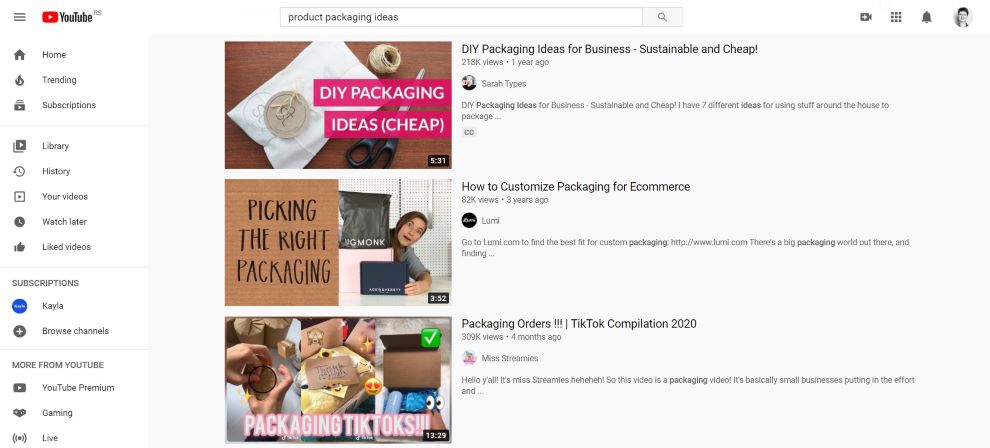
2. Let YouTube Guide Your Content Ideas
Did you know that YouTube is the second-largest search engine in the world?
As such, its content ideation potentials are limitless. A good place to look first is the Popular section on YouTube. You can use it to your advantage by looking for trendy topics there and also finding something of relevance to your industry, niche, business and, of course, your audience.
YouTube also has some of the most well-used comment sections on the internet. Their algorithms help sift through comments and enhance the visibility of the most useful ones. Quite frequently you might notice a valuable insight or a blog post idea in the comments on a particular video – so never neglect the vox populi!
3. Engage With Your Followers
It might be easy to overlook the reason why you’re writing content in the first place: your target audience.
Your followers’ insights, comments, suggestions and discussions on social media should not be taken lightly, just as another metric that Google will rank you by. It’s much more than that.
The fact that your audience is present and active on social media gives you a perfect chance to ask them, directly, what they’d like to see more of.
Invest time to participate in discussions and truly connect with your followers. That way, you can find invaluable insights for future blog posts based on their burning questions, struggles and needs.
You can also use polls, surveys and other means of interaction to get to the bottom of their opinions, wishes and desires.
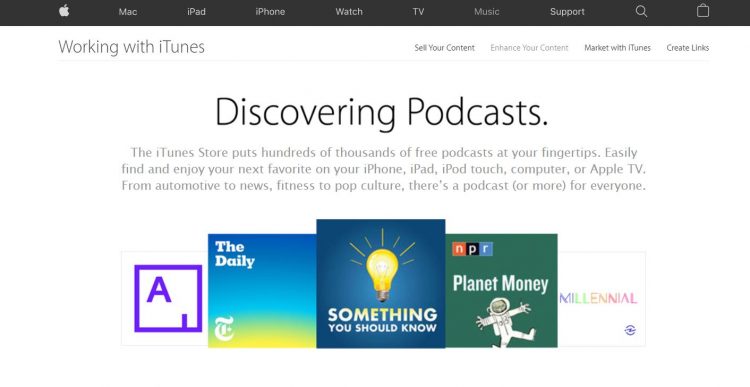
4. Explore New Topics With Podcasts
One-third (32%) of the US population listens to podcasts at least once a month.
Podcasts have gained the credibility, affection and trust of users and they’ve proven to be a good resource for new article ideas.
For example, iTunes podcasts will let you browse through the podcasts that are most popular in your niche and industry. This can point you directly to what topics and subjects your target audience wants to hear (or read) more about.
Getting an interview with a famous podcast host or being a guest on one of the shows can provide more value to your content and business, as well.
In other words, podcasts can be both a resource for ideas and a tool for expanding your brand awareness, attracting new audiences and getting more traffic on your website.
Go Offline For More Content Ideas
Compelling content and article blog ideas are not only found online – the offline realm is packed with inspiration, too.
1. Unravel The Myths In Your Industry
Every niche and every industry knows some myths and misconceptions, fallacies that won’t go away.
Think of the biggest misinterpretations and misunderstandings that follow your niche and bust those myths! Write a well-researched article on the truth behind those and provide value to your readers by offering them a glimpse of the truth.
The reason why these articles can be beneficial is that they can develop a sense of trust between you and your target audience.
2. Make A Predictive Article
Another way to analyze your industry is to make well-informed forecasts about its future.
What are the current trends pointing to? What might be the newest craze? Where is your industry headed next? Are some of the trends near their end?
You can answer these and many other questions in your articles. Back your predictions with perceptive and keen insight into the past and present of your niche and sprinkle it with credible stats – this will help the trust in your brand rise even further.
3. Show The ‘Behind The Scenes’
Everyone loves a good behind-the-scenes story.
If you provide your audience with a sneak peek behind the curtains of your work, they will certainly appreciate it. That way, you’ll give them something to discuss with their friends and peers.
Plus, it’s a good way to share the unspoken parts of your story and broaden the narrative around your brand.
4. Research Your Competition
Knowing what your competitors are doing is instrumental in your success.
In terms of content creation, here are the key aspects of your competitor’s work to watch for:
- Which of the topics they cover are trending: this can be tested with the aforementioned Google Trends – just put a few keywords your competitors are using in their articles and see what’s hot right now
- Which of their keywords are driving the most traffic: this can be put to a test with another tool we have suggested previously – Ahrefs. Another useful tool in that regard is SimilarWeb.
- How they use social media (who they follow and what they share)
- BuzzSumo is a great resource to learn what is trending on social media, but there are multiple other tools (such as Chrome extension ShareMetric) that will provide you with exact insight into who your competitors are following and who their target audience is
- What type of content they are publishing (blog posts, case studies, white papers, original research, etc.)
Bonus Tip #1: Think Laterally
Lateral thinking is a “fancy” name for “thinking outside the box.”
To come up with valuable new content ideas, sometimes a fresh new angle of looking at the problem you’re facing is required.
There are countless ways to do that, but one of the all-time “classics” is to just revert it all to the basic keyword or term you had in mind and explore the so-called tangential relationships that your subject matter has.
In his eBook and presentation How To Produce Better Content Ideas, Mark Johnstone argues that “an idea is a novel combination of previously unconnected elements in a way that adds value.”
He goes on to say that what every content researcher needs to know and make of as he or she contemplates the new content idea is:
- What the elements are
- How to find these elements
- What the connections look like
- How to make the connections
Take your time to watch this great TEDx talk of University of Bologna professor Giovanni Corazza speaking about the ways lateral thinking can be put to creative use.
Bonus Tip #2: Create Topics In Batches
More of a suggestion on a technique than anything else, writing content ideas topics in batches is frequently recommended by content pros in any given industry.
How can you apply this to your content workflow?
Instead of thinking of a specific topic to write about, you can come up with a list of all the potential topics that are occupying your mind. Researching a month-worth of new article ideas for your blog should be the goal here (depending on how frequently you post on your website or blog).
Create brief outlines of multiple ideas and it can help one singular idea branch out into many directions that you wouldn’t have been aware of by taking a more studious approach of just sitting down and developing one blog post idea.
Once you have enough topic ideas, it will be easier to focus on one of them and begin expanding it.
Bonus Tip#3: Check Duplicate Content
Publishing plagiarized content on a website can cause some serious consequences.
If you’ve plagiarized content on your website follow things are possible:
- De-ranking of your site search results.
- Decreased in the organic traffic of the website.
To deal with this, multiple online plagiarism-checking tools are available, like.
Wrapping Up: The Best Ways To Generate New Content Ideas
Finding the right content ideas and article topics that will resonate with your audience can be a daunting task, but not impossible. Especially if you know where to look, how to evaluate ideas and when to publish each of them.
To wrap up our comprehensive list of 25 tips and tools, here are the key takeaways.
To generate content ideas that will help you rank higher on Google, attract more readers and grow your website traffic, you can:
- Look for ideas within your company: Engage your team and organize brainstorming sessions, perform the audience research to learn about the struggles and needs you can address in your content, turn to your existing content to update, optimize and refine the most relevant blog posts, tell your personal story to build trust and credibility, write about your business struggles, share the mistakes you’ve made and talk about the problems you solved to engage your audience even more
- Find article ideas using forums and sourcing platforms: Find the most shared content using BuzzSumo, look for hot topics on Reddit, see what people are asking on Quora, create a list of valuable topics and create perfect titles using Portent
- Generate new content ideas with SEO tools: Find keyword ideas with Ahrefs and even more keyword phrases with SEMrush, find out what your competition uses with LSI Graph and look for the questions your audience asks with Answer The Public
- Use Google for content inspiration: Google search suggestions can give you keyword ideas, you can learn about the hot topics using Google Trends and Think With Google, while the People Also Ask box can help you structure your content and the Related Searches section can broaden your perspective and help you find more ideas
- Browse social media to find article topics: Explore trends and opinions on Facebook, let YouTube guide your content ideas, engage with your followers and ask them directly about the topics they’d love to learn more about or explore new topics and opportunities with podcasts
- Go offline for more content ideas: Unravel the myths in your industry, conduct research and write a predictive article with forecasts backed by data, show ‘behind the scenes’ of your business to open up to your audience and show your workflow or research your competition and find the gaps in their content that you can fill with original insights
And, of course, don’t shy away from thinking outside the box to come up with even more creative content ideas. Once you have a list of potential topics, create brief outlines, schedule publishing dates and start writing. Good luck!
"*" indicates required fields








